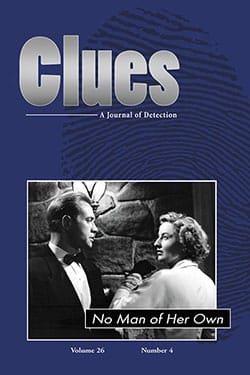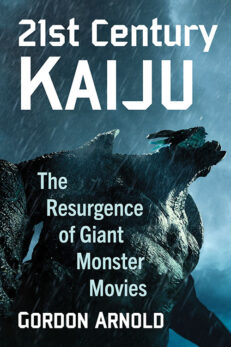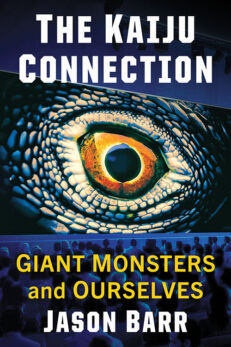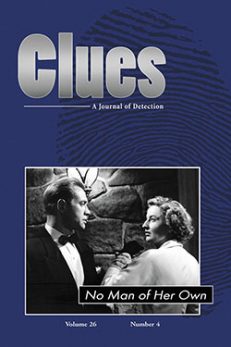Clues: A Journal of Detection, Vol. 26, No. 4 (Winter 2008)
Print Back Issue$30.00
In stock
About the Book
BACK ISSUE
This is a single back issue only. To order a current subscription, or for more information, please visit the journal’s web page at CluesJournal.com. Back issues from earlier volumes of Clues are available for order subject to availability. Also, single issues of the current volume may be ordered one at a time. Individuals may order back issues directly from our online catalog, and the charge for individuals is $30 (excluding postage). Issues from Volume 33 to the present are also available in ebook format on Kindle, Nook and Google Play.
The charge for single issues for institutions is $75 per issue (excluding postage). If your institution requires a back issue, please contact us to order at the appropriate rate.
About the Author(s)
Bibliographic Details
Executive Editor Margaret Kinsman
Managing Editor Elizabeth Foxwell
Format: softcover (6 x 9), back issue
Pages: 82
Bibliographic Info:
Copyright Date: 2008
ISSN 0742-4248
Imprint: McFarland
Table of Contents
Publisher’s Comments 3
Investigating Domestic Disorder: Harriet Prescott Spofford’s Detectives
Karen J. Jacobsen 5
Harriet Prescott Spofford’s role in the development of the detective tale has remained largely unexplored. In three stories—“In a Cellar,” “Mr. Furbush,” and “In the Maguerriwock”—Spofford uses the trope of the detective to investigate a number of anxiety-provoking issues in nineteenth-century society, particularly the chaos within the domestic sphere.
The “Test of Feminine Investigation” in Baroness Orczy’s Lady Molly of Scotland Yard Stories
Ellen Burton Harrington 24
Baroness Emmuska Orczy’s Lady Molly of Scotland Yard stories offer a bounded fantasy of female independence that allows the heroine to act with autonomy and use reason, along with “feminine investigation,” in a way that might offer support for a kind of New Woman. Still, this portrayal excludes women from the role of the male scientist-detective; ultimately, Lady Molly is valued for her ability to effectively police other women and her ultimate acquiescence to domestic ideology.
Tijuana the American Town: Images of the Corrupt City in Hammett’s “The Golden Horseshoe”
J. A. Zumoff 35
Dashiell Hammett’s short story “The Golden Horseshoe” (1924) presents a vision of society as fundamentally corrupt. Because it takes place in Tijuana, Baja California, many critics have read it as a description of Mexican or Tijuanan corruption. The author analyzes this corruption in Hammett’s story and argues that the story depicts a North American corruption rather than a Mexican corruption.
Feline, Not Canine: The Rise of the Female Arch-Villain in the 1940s Sherlock Holmes Films from Universal
Amanda J. Field 49
In 1942, Universal Studios “updated” Sherlock Holmes and recruited him to the war effort in a series of twelve B-movies starring Basil Rathbone. But what began as Nazi spy thrillers took
a new turn with the emergence of the female villain, a figure that tapped into masculine anxieties about newly independent women and presaged the femme fatale of film noir.
The Phenomenology of Noir Perception: Dorothy B. Hughes’s In a Lonely Place and Cornell Woolrich’s I Married a Dead Man
William Brevda 63
The author draws on Jean-Paul Sartre’s notion of the Other to analyze Dorothy B. Hughes’s In a Lonely Place (1947) and Cornell Woolrich’s I Married a Dead Man (1948). Hughes and Woolrich construct their novels around scenes that dramatize Sartre’s “revelation of the Other as a look” (Being, 475). Sartre’s phenomenology of perception lends itself to noir, and In a Lonely Place and I Married a Dead Man most powerfully dramatize his “Hell is other people” proposition.
Reviews
Mary W. Tannert and Henry Kratz, eds. and trans. Early German and Austrian Detective Fiction: An Anthology. Gundela Hachmann 73
David Geherin. Scene of the Crime: The Importance of Place in Crime and Mystery Fiction. Rachel Schaffer 75
Author Guidelines 78
Call for Papers: Chester Himes and His Legacy 79
Book Reviews & Awards
- “Clues is a must-have for readers and writers of crime fiction. Scholarly, thought-provoking, wide-ranging in its topics, Clues covers the crime and thriller map.”—Sara Paretsky
- “A. Conan Doyle, notoriously resentful of Sherlock Holmes’s success, liked to scorn ‘police romances’ as less significant and worthy of his talents than his other literary work. If he could have read Clues, the thinking mystery reader’s journal, he would surely have felt differently—and learned much he never realized himself about even his own landmark contribution to the genre, from which so much else by others has flowed.”—Jon Lellenberg, U.S. agent for the Arthur Conan Doyle estate
- “I love reading Clues. Every issue provides thought-provoking, well-researched articles. The variety and scope of the material found in Clues makes an unparalleled, ongoing contribution to our understanding of the role of crime fiction in our culture, and the genre’s reflection of its time and society.”—Jan Burke, Edgar-winning author of The Messenger (2009)
- “Clues is an important journal. It carries the torch of tradition that is the backbone of detective fiction. It goes below the surface and gets to the heart of what makes the genre so fascinating and valid today”—Michael Connelly, author of the Harry Bosch novels, including The Overlook (2007)
- “for erudite and fascinating truths about mysteries, follow the clues to Clues, the scholarly journal that is an essential resource for every serious student of the mystery”—Carolyn Hart, author of Death Walked In (2008)
- “with scholarship ranging from Poe to Peters, nothing beats Clues”—Joan Hess, author of Mummy Dearest (2008).





